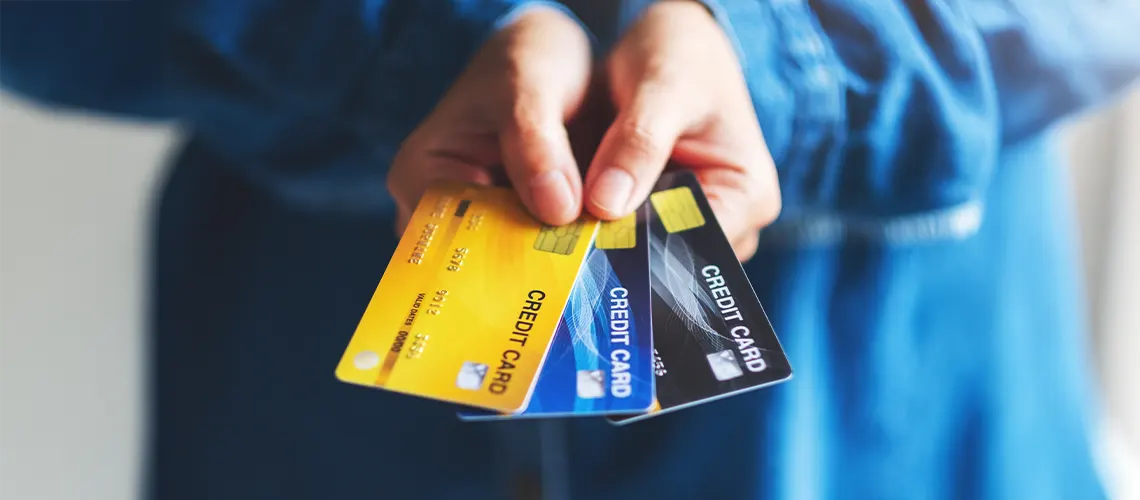Statistically speaking, every adult Pole has 1.5 payment cards in their wallet*. Debit cards are the most common, followed by credit cards. However, the range of available solutions is much wider. Check what types of cards your customers may have and what challenges and benefits their acceptance brings to your store.
At the end of December 2024, there were 46.3 million payment cards in circulation on the Polish market (data from: National Bank of Poland, "Information on payment cards Q4 2024"). Over 85% of them were debit cards, and nearly 11% were credit cards. Prepaid and charge cards complete the pool. Interestingly, in the analyzed period, an increase was recorded in both the number (by 2.7%) and value (by 13.9%) of transactions made with payment cards in e-commerce. Their total amount was PLN 14.8 billion, and the average payment for single purchases was PLN 180.
It is clear that paying by card when placing an order is still one of the most popular payment methods chosen by online shoppers. The Gemius report "E-commerce in Poland 2024" shows that as many as 43% of customers used it. This is therefore a large group of customers whose needs are worth considering in your offer - providing them with an efficient, secure, and flexible payment process will directly translate into increased conversion and loyalty. But will one system handle all types of cards?
Debit card – the safest payment method?
A debit card is often equated with a payment card in general. This stems from the popularity and availability of this product. Almost every personal account holder can receive a debit card, often without additional fees. Sometimes the lack of fees is conditional on, for example, the need to perform a certain number of card transactions per month. The funds that the payer can use come directly from their account. This means that the payment is made up to the amount of the available balance and does not involve the risk of debt.
For you as a seller, this means minimal risk of such an operation. Authorization takes place almost immediately, and the money should reach your account on the next business day.
What is worth knowing about credit cards?
Unlike a debit card, when paying with a credit card, you can use the credit limit on the account, not just the funds accumulated on it. When issuing a card, the bank, based on information about the client's creditworthiness, grants them a specific credit limit, which can later be used for purchases or service fees. If the limit is repaid within the interest-free period (usually around 55-60 days), no additional fees are charged. If the client does not settle the entire balance on time, the bank will charge interest on the remaining amount. Holding a credit card usually does not require opening a current account at the bank issuing the card. Since the limit on the card is a type of credit, it therefore affects creditworthiness.
For the seller, accepting credit card payments means a slightly higher risk of chargebacks, as the customer can easily dispute the transaction. It is also worth implementing the 3D Secure standard to reduce the risk of unauthorized payments.
The fact that they offer additional funds speaks in favor of implementing credit card payments, as they can encourage spending more money, and thus larger purchases.
Charge card. How does it differ from a credit card?
A charge card resembles a credit card in many aspects. First of all, in terms of convenience - it allows you to use the granted monthly credit limit for any number of transactions. However, the repayment mechanism is different. When using a charge card, all transactions are collected in one statement, which the customer must settle at once - this usually happens automatically, and the money is debited from the customer's account. There is no possibility of installment payments or postponing subsequent repayments.
Banks in Poland direct offers of charge cards almost exclusively to entrepreneurs. As a result, limits on charge cards are usually higher than on credit cards, and banks also offer users a richer package of additional services - from insurance (e.g., travel insurance for business trips), through concierge, to access to exclusive loyalty programs.
The advantages of enabling charge card payments are the same for sellers as in the case of credit cards.
Discover all the payment solutions offered by Przelewy24
Prepaid card, or prepaid cards
Prepaid cards are particularly popular among employers. They are a type of non-wage benefit. Funded in advance with a specific amount, they allow companies to precisely plan and control the budget for benefits, and enable employees to purchase any goods or services. The card is linked to a special account created specifically to handle that card. This is not a personal account that, for example, could be linked to a savings account. After the funds on the account have been used, the card can usually be repeatedly topped up with any amounts.
From a seller's point of view, the main advantage of a prepaid card is the full guarantee of the availability of funds - the customer cannot spend more money than they have on the card. This eliminates the risk of transaction rejection due to insufficient funds and reduces the number of chargebacks.
Traditional or modern? Discover payment methods at Przelewy24
Types of payment cards. Summary
Supporting a variety of payment cards - from debit to credit and charge cards, to prepaid cards - is now an absolute must-have in e-commerce. Thanks to Przelewy24, you can accept payments not only with payment cards, but also use numerous solutions based on them, such as Apple Pay, Google Pay, currency payments.
It is worth noting that, in addition to the aforementioned, currency cards and corporate cards are also distinguished - however, this is not a specific type of card, but rather the way it is intended for use. Payment cards can also be divided according to the carrier and technology, distinguishing physical (plastic) cards, contactless cards, virtual cards, or electronic wallets.
The table below allows for a quick comparison of the most important features of debit, credit, prepaid, and charge cards.
| Card Type | Source of Funds | Limit | Repayment | Impact on Creditworthiness | Possibility of Additional Services (insurance, loyalty programs, etc.) | Requirement to Have an Account at the Issuing Bank |
|---|---|---|---|---|---|---|
| Debit | Funds held in the account | Up to the available balance | Immediate blocking of funds, no possibility to spend more than is in the account | No | Sporadically | Yes |
| Credit | Credit limit granted by the bank | According to the credit limit decision, determined individually based on, among other things, creditworthiness | The billing period is approx. 55-60 days | Yes | Yes | No |
| Charge | Credit limit granted by the bank | According to the credit limit decision, determined individually based on, among other things, creditworthiness | Automatic, one-time from the linked account; the billing period is approx. 30 days | Yes | Yes | Yes |
| Prepaid | Funds paid in advance to the card account | Up to the available balance | None – only prepaid funds are used | No | No | No |
- Sources: GUS Report "Poland in Numbers 2024" and National Bank of Poland "Information on Payment Cards Q4 2024".



